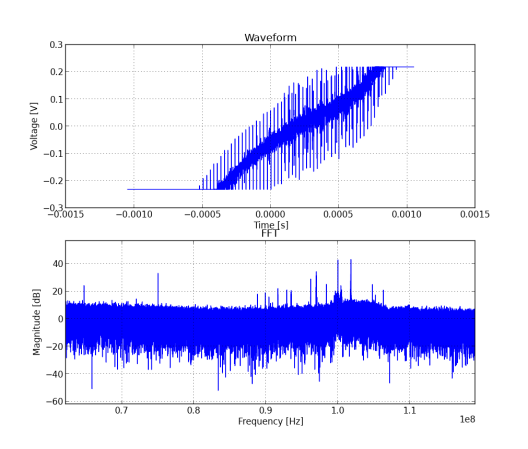
[Matthias Blaicher] may think this isn’t a big deal when it comes to the amount of work he put into the hack. But for us, anything that extends the functionality of the versatile yet affordable Rigol DS1052E is a win. In this case he’s taken a previous hack and made it work for more people by extending the functionality of the WFM file format viewer.
[Dexter2048] pulled off the original hack which allows this oscilloscope to be used as a spectrum analyzer. [Matthias] didn’t want the tool to be limited to running only on Windows systems so he got to work. This isn’t quite as easy as sounds because the only part of the original code that was released is the parser itself. [Matthias] had to build everything up from that starting point. His software uses standard Python to parse the WFM file and reformat the data. The features included in the current version allow you to export data as a CSV file and even plot the waveform and FFT as seen above.















nice job!
im tll trying to get my owon scope to work over USB on linux! ,,, or even just on 64 bit …
One comment and this post about an awesome hack has been up for FIVE DAYS? C’mon HaD viewers…
Anyway, this is great work. The application is written in Python. I’m going to try sticking it in my Raspberry Pi and using it with my DS1102E scope. Thank you Matthias Blaicher.
Neat coding, but I don’t understand the reason for using the rigol format file. As shown elsewhere on hackaday (http://hackaday.com/2012/03/30/grabbing-data-from-a-rigol-scope-with-python/) python can grap the data from these scopes via Usbtmc or visa.
The code for manipulating the data once it is extracted from the file could be handy though.
This thing does not work unfortunately. I have .wfm file from Agilent Technology oscilloscope and it gives the following error: Format does not follow the known file format. Try the –forgiving option.
If you’d like to help development, please report this error:
Field magic == 42405 not met, got 65535
Two files with the same ending do not neccessarily have the same data format (AFAIK Rigol is not Agilent). But apparently newer Rigol models use a different file header so there is no “one” solution yet to parse these files’ structure.